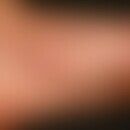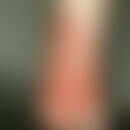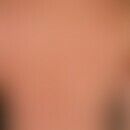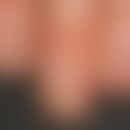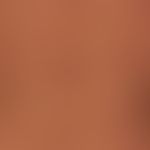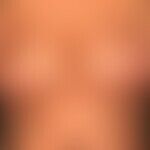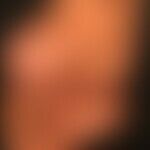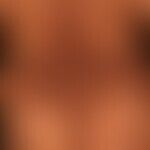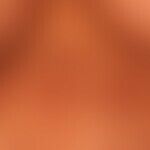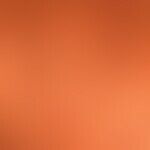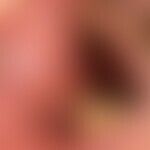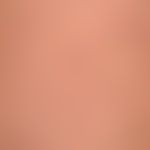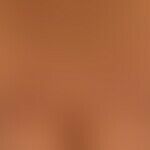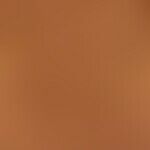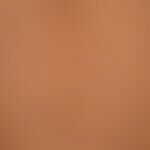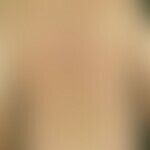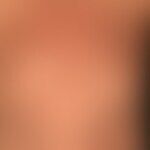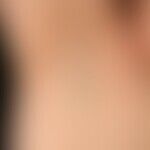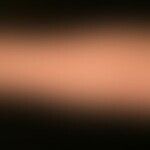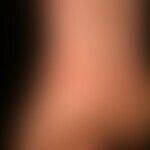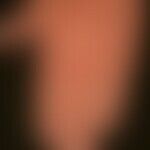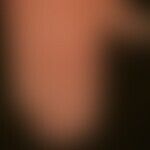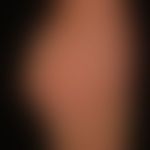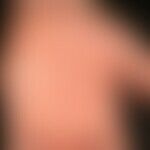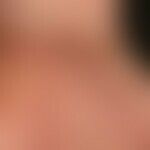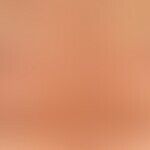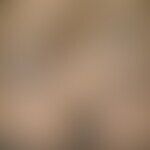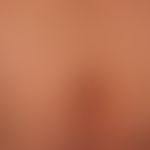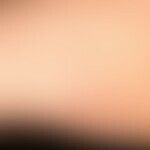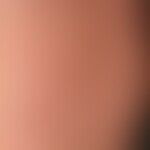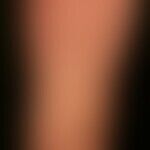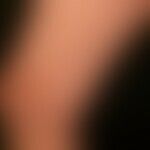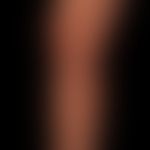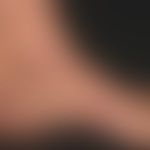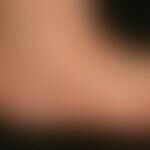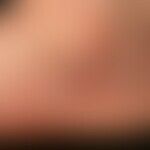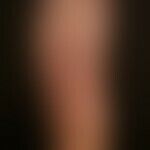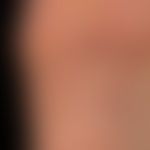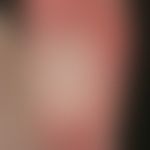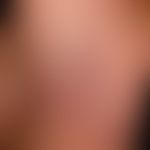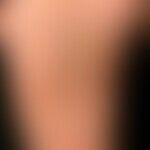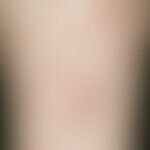Synonym(s)
DefinitionThis section has been translated automatically.
Acute, exanthematous form of lichen planus. In contrast to classic lichen planus, the grouped arrangement of papules is often absent in the eruptive exanthematous variant and gives way to a disorderly disseminated distribution pattern.
Exanthematous lichen planus tends to form extensive plaques that resolve only marginally into individual papules.
The development of erythroderma is possible (although extremely rare).
EtiopathogenesisThis section has been translated automatically.
Unsolved.
Relatively often drug-induced (e.g. gold salts, antimalarials, beta-blockers) or occurring after vaccinations. The term "lichen planus-like drug eruption" or "generalized lichenoid drug eruption" is also used for this form of manifestation. S.u. Drug exanthem lichenoides.
Lichen planus-like exanthema is also observed in chronic graft-versus-host disease (see figure). Furthermore, after percutaneous radiotherapy (Kluger N 2017) and after vaccinations of various types (Rosenblatt AE et al. 2015)
You might also be interested in
ManifestationThis section has been translated automatically.
Children as well as adults.
LocalizationThis section has been translated automatically.
Adults:
- Trunk, extremities with emphasis on flexor sides of wrists and forearms, face remains free.
- Hands and feet often involved
- Mucosal involvement (30-40%): Penis, oral and genital mucosa.
- Capillitium
Children:
- Extremities (70%)
- Trunk
- Mucous membranes remain free
- capillitium remains free
- no palmo-plantar involvement
Clinical featuresThis section has been translated automatically.
Initially about 0.1-0.2 cm in size, surrounded by the natural skin furrows, raised, plateau-like, smooth, shiny lacquer-like (as if polished), clearly itchy, red papules. The typical livid color may give way to a brown base tone over a longer period of time.
Aggregation of several papules with formation of plaques of different sizes. In long-term plaques, the typical "polished smooth surface" may give way to a verrucous, sometimes whitish surface structure. Histologically, this clinical finding is accompanied by severe acanthosis and orthohyperkeratosis. No parakeratotic keratinization.
The diagnostically important surface reflection of the (classic) lichen planus papules is best recognized when light is incident from the side.
Another characteristic feature of the exanthematic form is the linear arrangement of the efflorescences in scratching or rubbing marks (see below Köbner phenomenon = isomorphic irritation effect).
Important: The patient responds to the itching by rubbing, not by scratching the efflorescences. This distinguishes the disease from atopic dermatitis.
Infestation of the oral mucosa (see also Lichen planus mucosae) is observed in > 50% of patients. Typical are symmetrical, reticular or nummular white plaques, also disseminated, 0.1-0.2 cm large, white papules of the buccal mucosa and/or the tongue and/or the gingiva (explanation: the whitish discoloration of the papules/plaques corresponds to the "wash-skin effect" of the hands. Lichen planus efflorescence also shows a tendency to keratinization in the mucous membrane area; horn absorbs water through the moisture in the mouth, swells and then appears whitish and opaque due to the strong refraction of light. This distinguishes it from the non-keratinizing, healthy oral mucosa)
A special feature is the erosive lichen planus of the oral mucosa, which is usually painful.
Genitalia, in particular the glans penis and vulva, are affected in the form of anular or circinate, whitish but also red or erosive (therapy-resistant) plaques (see below Lichen planus mucosae/ Lichen planus vulvae).
Capillitium (see below Lichen planus follicularis capillitii).
Nails: S. Lichen planus classic type(trachyonychia).
HistologyThis section has been translated automatically.
TherapyThis section has been translated automatically.
According to the Lichen planus.
Analysis of the triggering cause in question.
- Discontinuation of possible medication. Local glucocorticoid therapy in case of severe itching.
If necessary, reduce internal therapy with prednisone equivalent, initially 10-20 mg/day p.o., maintenance dose adapted to the disease.
Azathioprine, sulfasalazine, methotrexate, acitretin were successfully used. These therapy modalities should always be evaluated under the aspect of the self-limited course of the disease.
Experimental: Apremilast, an oral PDE4 inhibitor, which was successfully tested in a smaller monocentric study for the lichen planus exanthematicus.
Progression/forecastThis section has been translated automatically.
Rather cheaper than the classic Lichen planus. Frequently self-limated course within a 3-6 month period!
LiteratureThis section has been translated automatically.
- Chen S et al (2015) Lichen planus pigmentosus-inversus: report of three Chinese cases and review of the published work. J Dermatol 42:77-80.
- de Golian EW et al (2014) Lichenoid drug reaction following influenza vaccination in an HIV-positive patient: a case report and literature review. J Drugs Dermatol 13:873-875.
- Fessa C et al (2012) Lichen planus-like drug eruptions due to β-blockers: a case report and literature review. Am J Clin Dermatol 13:417-421.
- Noruka EN (2007) Lichen planus in African children: a study of 13 patients. Pediatr Dermatol 24:495-498
- Kluger N (2017) Radiation-associated lichen planus: a case report and literature review.
- Acta Dermatovenerol Alp Pannonica Adriat 26:105-108.
- Omidian M et al. (2010) Efficacy of sulfasalazine in the treatment of generalized lichen planus: randomized double-blinded clinical trial on 52 patients. J Eur Acad Dermatol Venereol 24:1051-1054.
- Pedraz J et al (2010) Familial eruptive generalized lichen planus in a pediatric patient. J Dermatol 37:910-912
- Rose AE et al (2011) Erythrodermic lichen planus. Dermatol Online J 17:26
- Rosenblatt AE et al (2015) Cutaneous reactions to vaccinations. Clin Dermatol 33:327-332.
- Turan H et al (2009) Methotrexate for the treatment of generalized lichen planus. J Am Acad Dermatol 60:164-166.
- Vazirnia A et al (2014) Acitretin for the management of generalized cutaneous lichen planus. Dermatol Online J PubMed PMID: 25244164.
Incoming links (3)
Erythema dyschromicum perstans; Granuloma anulare disseminatum; Lichen planus generalisatus;Outgoing links (12)
Apremilast; Atopic dermatitis (overview); Drug exanthema lichenoid; Erythrodermia; Graft-versus-host disease chronic; Koebner phenomenon; Lichen planus classic type; Lichen planus follicularis capillitii; Lichen planus mucosae; Lichen planus vulvae; ... Show allDisclaimer
Please ask your physician for a reliable diagnosis. This website is only meant as a reference.
